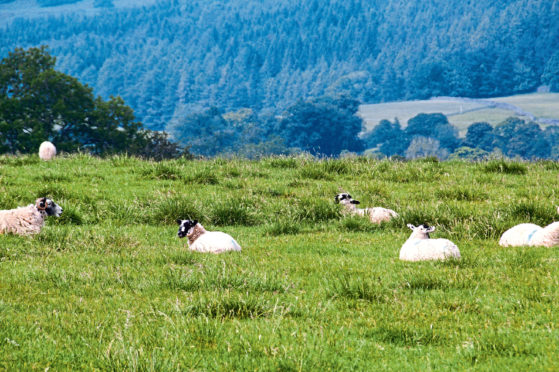In the week shoppers are being encouraged to “love lamb”, new research from Sheffield University has concluded sheep farmers would be better off if they turned their land over to trees.
The study, which was published in the journal Environmental Research Letters, coincided with the Scottish Government’s announcement of an extra £160 million to increase new planting.
The funding includes a new capital grant scheme for farmers.
The Sustainable Agriculture Capital Grant Scheme (SACGS) will open later this month and run as a pilot scheme for a five-week period, with the offer of grants of up to £20,000 for producers to purchase new equipment.
However, Sheffield University’s Centre for Sustainable Futures said British sheep farmers didn’t even need to plant trees but could be more profitable by letting their land naturally regenerate, which would allow them to sell credits for the carbon dioxide (CO2) the forest absorbs.
The study found that farmers with at least 25 hectares of land could turn a profit if they allowed it to naturally regenerate into native woodland and were paid as little as £3 per tonne of CO2.
If businesses looking to offset their emissions were willing to pay £15 per tonne of CO2, they calculated, forests of any size would make a profit.
The study’s lead author, Professor Colin Osborne, said: “Sheep farming in the UK is not profitable without subsidies, but forests that sell carbon credits can be economically viable – so it makes sense for the government to help farmers transition.”
In his announcement of new funding for forestry, Rural Economy Secretary Fergus Ewing said: “We know farmers and crofters want to contribute to our climate change ambitions and to cut their emissions and farm more sustainably.
“Helping them to change their practice by ensuring they have access to the right equipment, tools and knowledge is key. The new £10m SACGS will provide support to do this.”
NFU Scotland president Andrew McCornick acknowledged that for a “significant number” of farmers, forestry has become an increasingly important diversified income stream.
He added: “The availability of increased funds for planting will allow more farmers and crofters to identify if investment in trees is the right business decision for them.
“While we await detail on the type of investment that will qualify, it is a pilot with potential to help cut emissions on farm while improving the bottom line of the business.”
The National Sheep Association was contacted for comment.
nnicolson@thecourier.co.uk










